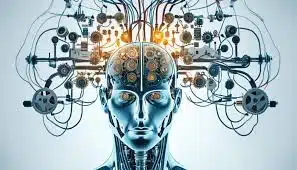- The Foundation of Continuous Learning in AI
- Real-Time Adaptation: The Mechanics Behind It
- Applications Across Industries
- Healthcare
- Finance
- Retail
- Autonomous Vehicles
- Challenges of Continuous Learning
- The Future of Continuous Learning AI
- Conclusion

In today’s rapidly evolving digital landscape, the need for continuous learning has never been more apparent. As technology advances, artificial intelligence (AI) systems are developing capabilities that allow them to adapt in real time, significantly enhancing their utility across various industries. This shift marks a transition from static, pre-programmed models to dynamic systems that can learn and evolve based on new data.
The Foundation of Continuous Learning in AI
At its core, continuous learning in AI refers to the ability of a machine learning model to improve its performance through ongoing experience. Instead of requiring retraining from scratch as new data is introduced, modern AI systems can adjust their algorithms and approaches on the fly, making them inherently more flexible and efficient. This approach not only saves time but also allows AI to remain relevant in a world where information is constantly changing.
Real-Time Adaptation: The Mechanics Behind It
The mechanics of real-time adaptation in AI involve several advanced techniques, including reinforcement learning, transfer learning, and online learning. Reinforcement learning, for instance, allows systems to learn by interacting with their environment and receiving feedback, refining their strategies based on successes and failures. Transfer learning enables AI to apply knowledge gained from one task to another, thus speeding up the learning process. Online learning helps AI continuously update its model as new data arrives, leading to immediate performance improvements without downtime.
Applications Across Industries
The applications of continuous learning and real-time adaptation are vast and impactful.
Healthcare
In healthcare, AI systems can analyze patient data in real time, improving diagnostic accuracy and personalizing treatment plans. Machine learning models continuously learn from new patient outcomes and feedback, enabling healthcare professionals to make more informed decisions.
Finance
In the finance sector, adaptive AI systems monitor market trends and trading patterns, adjusting their strategies in real-time to capitalize on emerging opportunities while minimizing risks. This constant learning ensures that financial firms remain competitive in an ever-changing marketplace.
Retail
Retail businesses leverage AI to monitor customer behavior and trends, adjusting inventory and marketing strategies on the fly. This continuous learning helps retailers not only anticipate customer needs but also respond effectively to shifts in consumer preferences.
Autonomous Vehicles
In the realm of autonomous vehicles, continuous learning allows systems to navigate complex and changing environments. By learning from real-time data inputs, such as traffic patterns and road conditions, these vehicles can enhance their decision-making processes, improving safety and efficiency.
Challenges of Continuous Learning
Despite its benefits, continuous learning in AI also presents challenges. One significant issue is the risk of model degradation, where the system may start to overfit new data without retaining critical information from past learning. Ensuring that AI models maintain a balance between old and new knowledge is crucial. Additionally, there are ethical considerations regarding data privacy and the potential for biases to be amplified if they go unchecked in the continuous learning process.
The Future of Continuous Learning AI
Looking ahead, the future of continuous learning and real-time adaptive AI appears promising. As organizations increasingly embrace digital transformation, the demand for smarter, more adaptable AI solutions will grow. Continued advancements in algorithms, combined with enhanced data processing capabilities, will enable even more sophisticated applications, paving the way for innovations that we have yet to imagine.
Conclusion
Embracing continuous learning in AI is not just about keeping pace with technological advancements; it’s about leveraging those advancements to drive creativity, efficiency, and growth. As these systems evolve, they hold the potential to revolutionize industries and enhance human capabilities, ushering in an exciting era of intelligent technology that learns and adapts in real time. By fostering a culture of continuous learning, businesses and individuals alike can ensure they are well-prepared to harness the full potential of this transformative power.